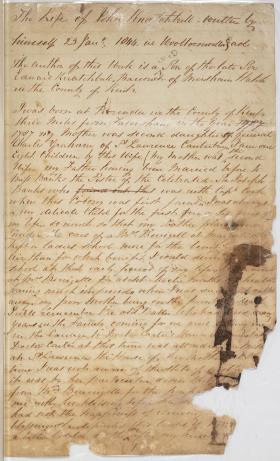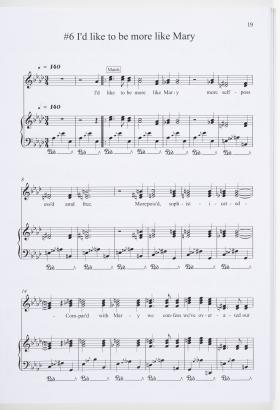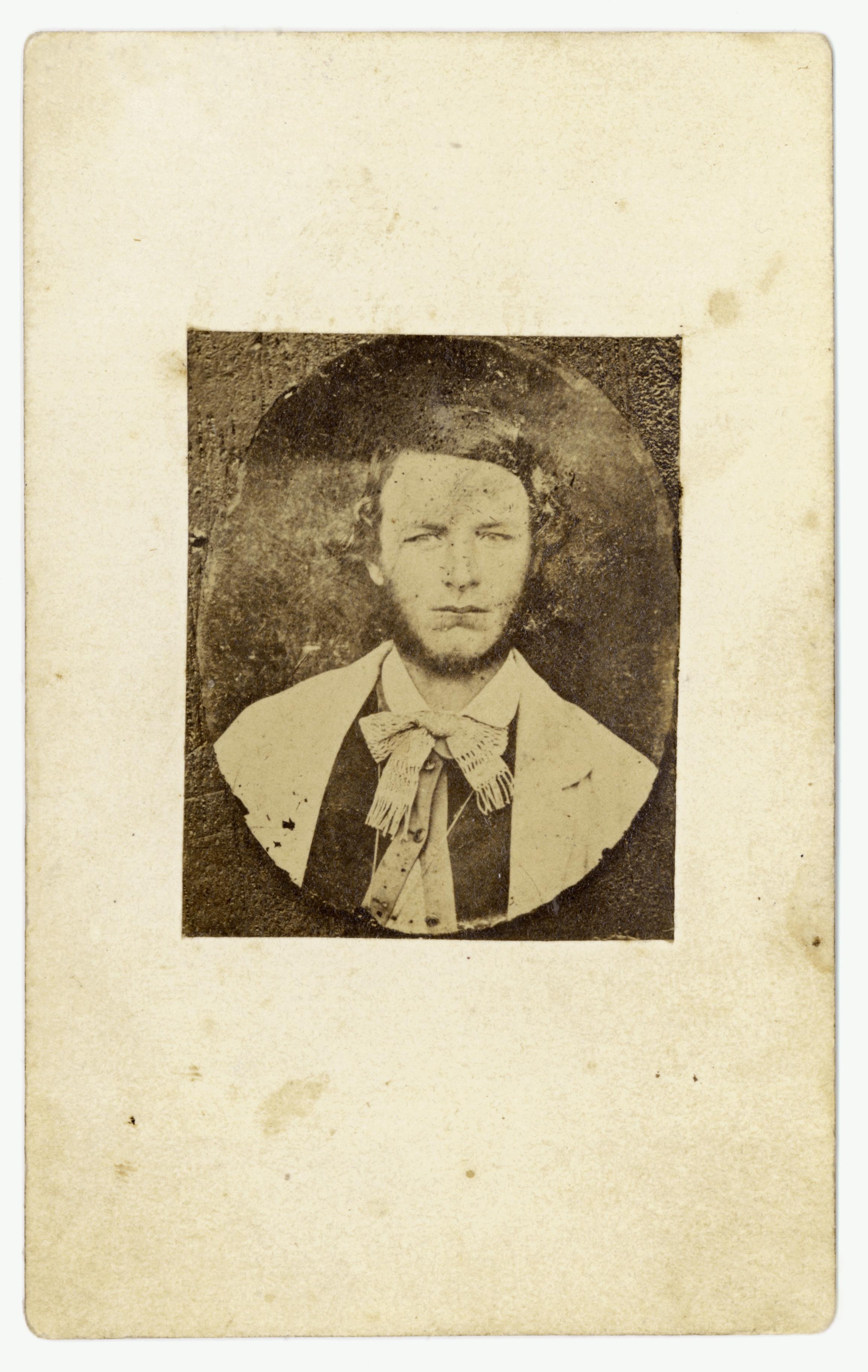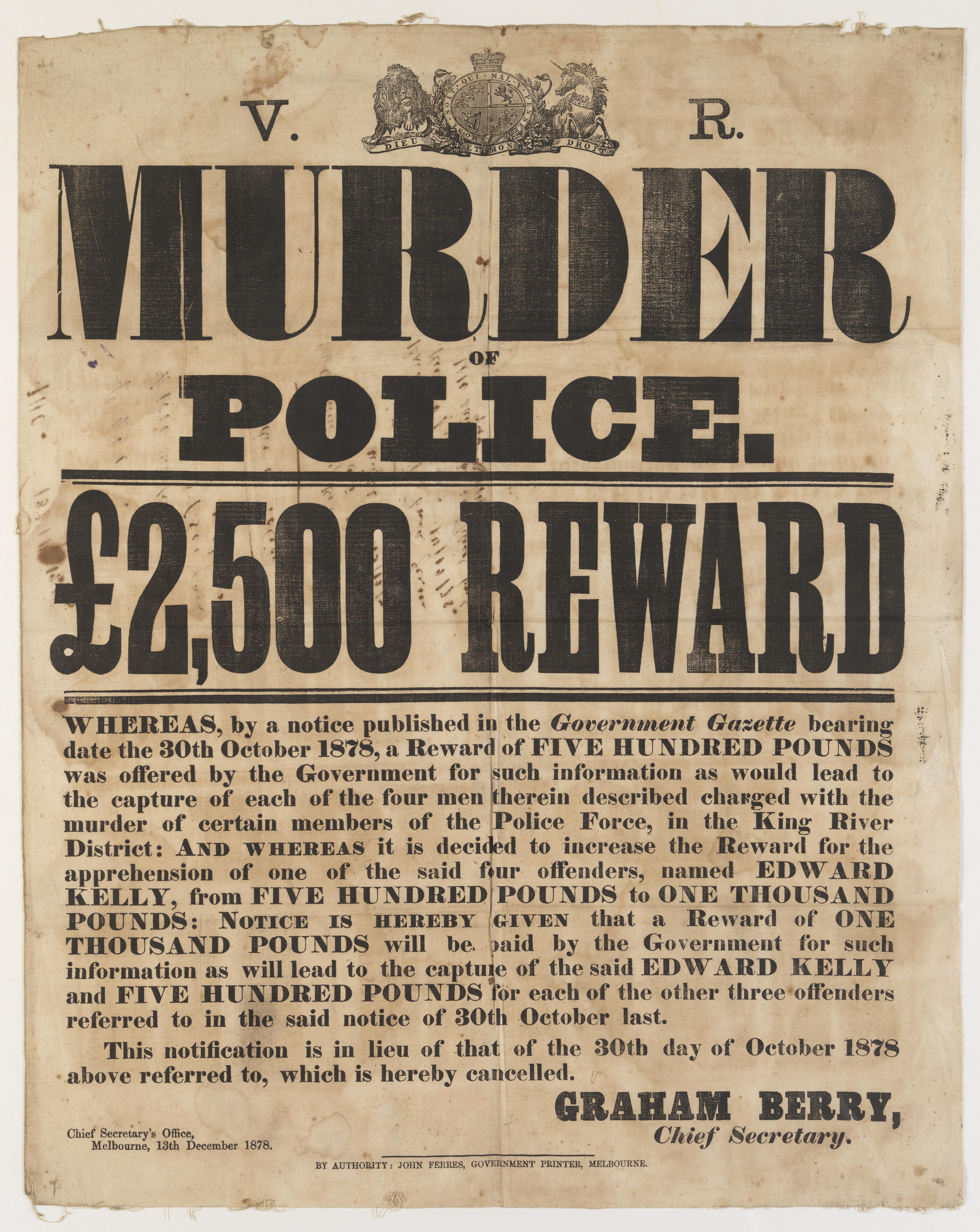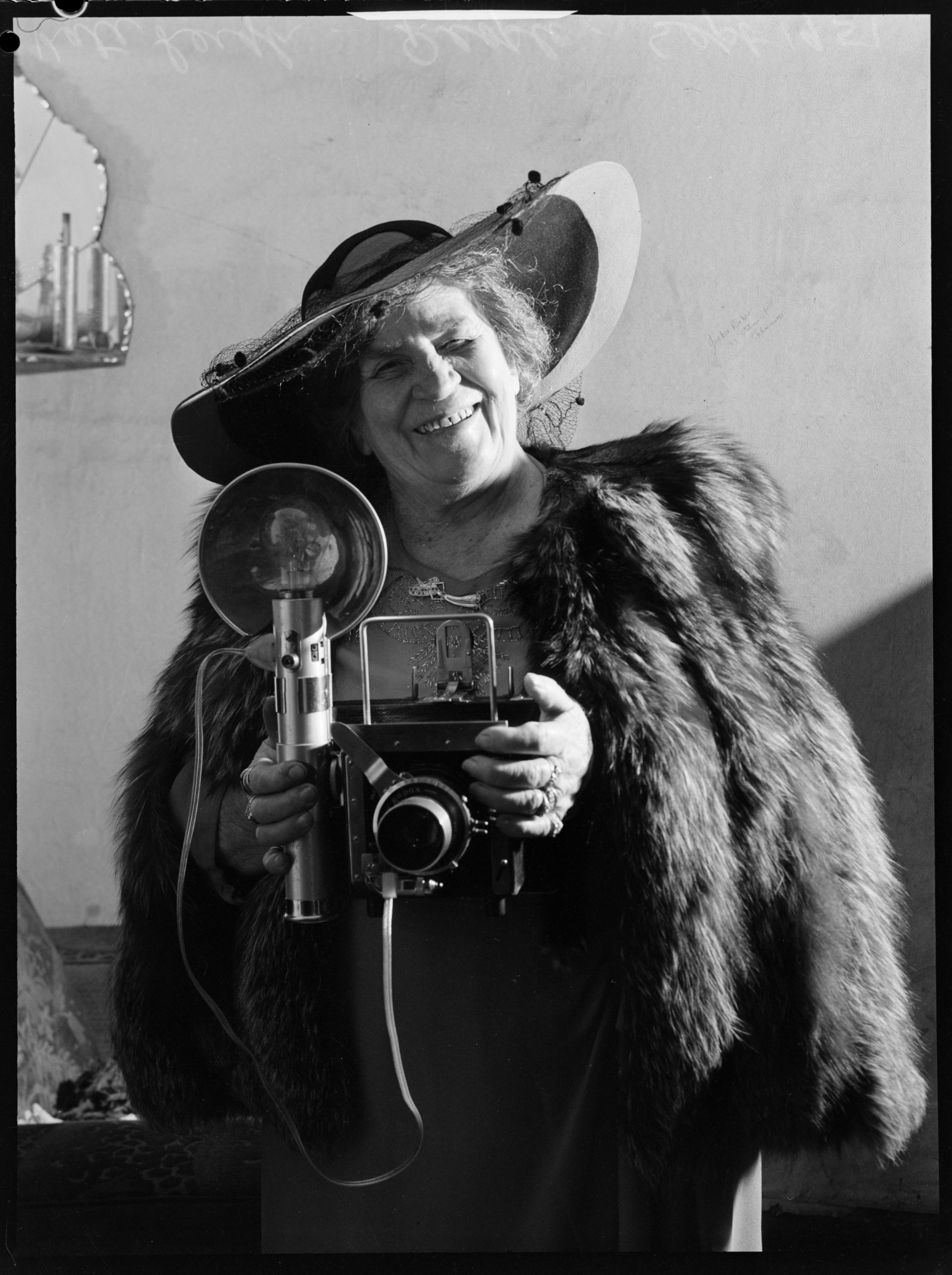Take 5 famous felons
The stories of five famous felons told through the collection.
John Knatchbull
John Knatchbull was born into a noble family in England in the early 1790s. Charged with stealing in 1824 and transported to NSW, he committed increasingly serious crimes over two decades. In 1844, newspapers clamoured to share details of how Knatchbull brutally killed widowed shopkeeper and mother of two, Ellen Jamieson, with a tomahawk. Knatchbull’s controversial lawyer Robert Lowe made a case for moral insanity, arguing his client was not responsible for his crime. Lowe failed, and the former officer of the Royal Navy was hanged on 13 February 1844.
Knatchbull’s handwritten autobiography — made possible by Gaol Governor Henry Keck, who supplied the killer with paper and ink — begins with a plea for sympathy: ‘I will open to the eyes of the world [to] such persecutions and deprivations that the hardest of hearts would bleed and commiserate with me in my sufferings.’
Mary Ann Bugg
Bushranging in colonial Australia was a distinctly masculine enterprise, but some women disrupted this pattern. One of the more famous examples of a female bushranger is Mary Ann Bugg (1834–1905). The daughter of an Aboriginal woman and a convict, Bugg became the consort of Frederick Ward, better known as Captain Thunderbolt. While perhaps not emblematic of Aboriginal resistance to colonisation, she flouted the gendered stereotypes and legal systems imposed by the colonists. Bushrangers, male and female, were traditionally feared; yet, for a few women, regardless of race, Bugg was a role model because she was strong and independent. A song from the musical The Man Called Thunderbolt, published by Vivien Arnold in 2016, highlights this admiration with its title: ‘I'd Like to be More Like Mary’.
Ben Hall
One of our more recognisable bushrangers, Ben Hall, was born in Maitland, NSW, on 9 May 1837, to ex-convicts Benjamin and Elizabeth Hall. After a short career in crime, he was killed in an aggressive police ambush on 5 May 1865, just days before what would have been his 28th birthday.
The dramatic end to Hall’s life — a good- looking man gunned down in a rush of adrenaline, fear and bullets — has kept him alive in the popular imagination. His death near Goobang Creek, northwest of Forbes, was very different to the sombre ceremony that a judicial hanging would have provided if he had been captured and found guilty in a courtroom.
This violent end has generated some sympathy for a felon who committed numerous property crimes, but who was also widely considere to be a gentleman bushranger.
Ned Kelly
In a line-up of Australian crooks, nobody stands taller than Edward ‘Ned’ Kelly. Born in Beveridge, rural Victoria, probably in December 1854, Kelly formed a gang with his younger brother Dan, Joe Byrne and Steve Hart. This wanted poster, dated 13 December 1878, captures the drama of the day.
A reward for information leading to the capture of the Kelly Gang’s leader was an extraordinary £1000 (around $100,000 today) with his subordinates worth £500 each. An enticing sum for anyone wanting to improve their cash flow or with a desire to etch their name into the history books by bringing down Australia’s most notorious bushrangers. A siege at Glenrowan in late June 1880 saw the junior gang members killed. Their leader was captured and hanged, after a high-profile trial, at the Old Melbourne Gaol on 11 November the same year.
Kate Leigh
Kate Leigh (1881–1964) survived a rough upbringing in her hometown of Dubbo to become one of the more successful Australian crooks of the early twentieth century. Establishing herself in Surry Hills, Leigh ran a business that specialised in diversification (including drugs, sly grog and stolen goods). Leigh is known for her role in Sydney’s ‘Razor Wars’, when gangs, in response to the Pistol License Act 1927 (NSW), started carrying razors instead of firearms during the 1920s and 1930s. Feisty and fearless, Leigh was very good at being mostly bad. This photograph, probably by Vic Johnstone, was taken in 1951 when Leigh was 70. Despite her business collapsing after a fight with the Australian Tax Office and changes to drinking regulations, she holds a special power in this image: she still owns her celebrity.
Dr Rachel Franks is the Coordinator, Scholarship at the State Library and author of Uncommon Hangman, An The life and deaths of Robert ‘Nosey Bob’ Howard.
This story appears in Openbook spring 2023.
